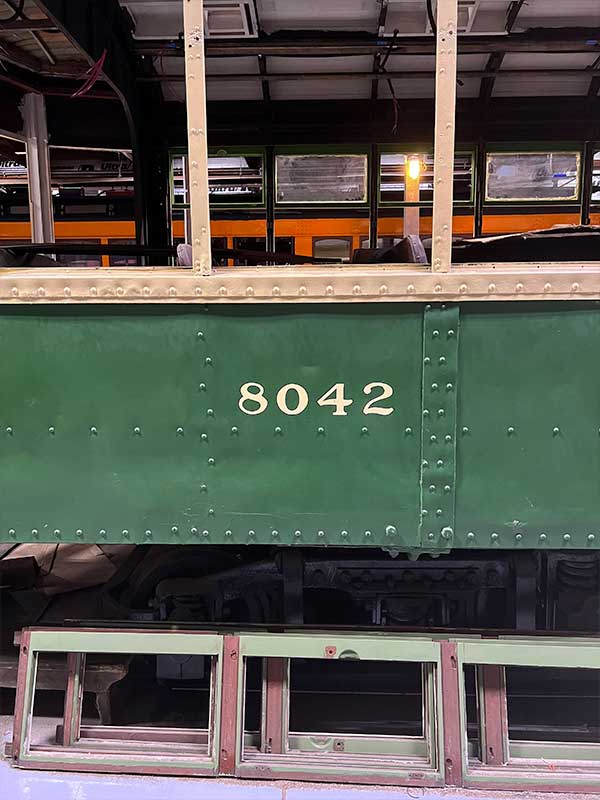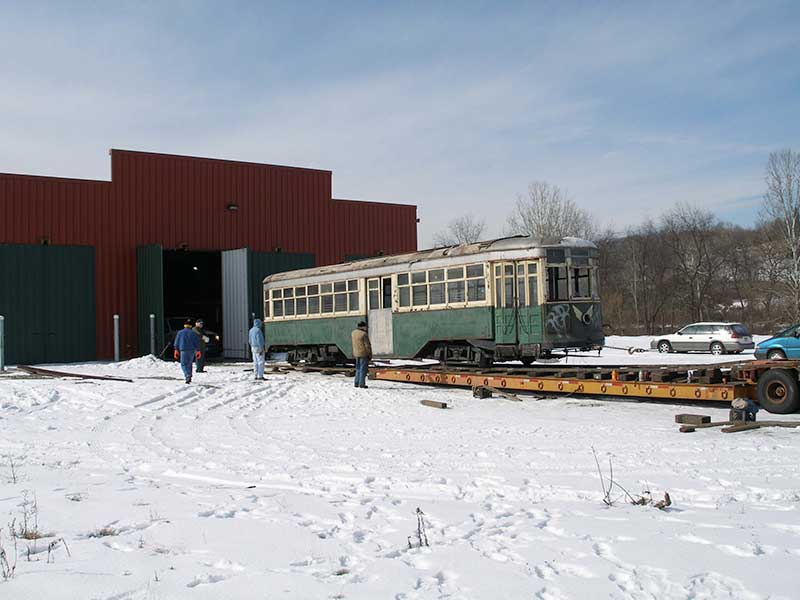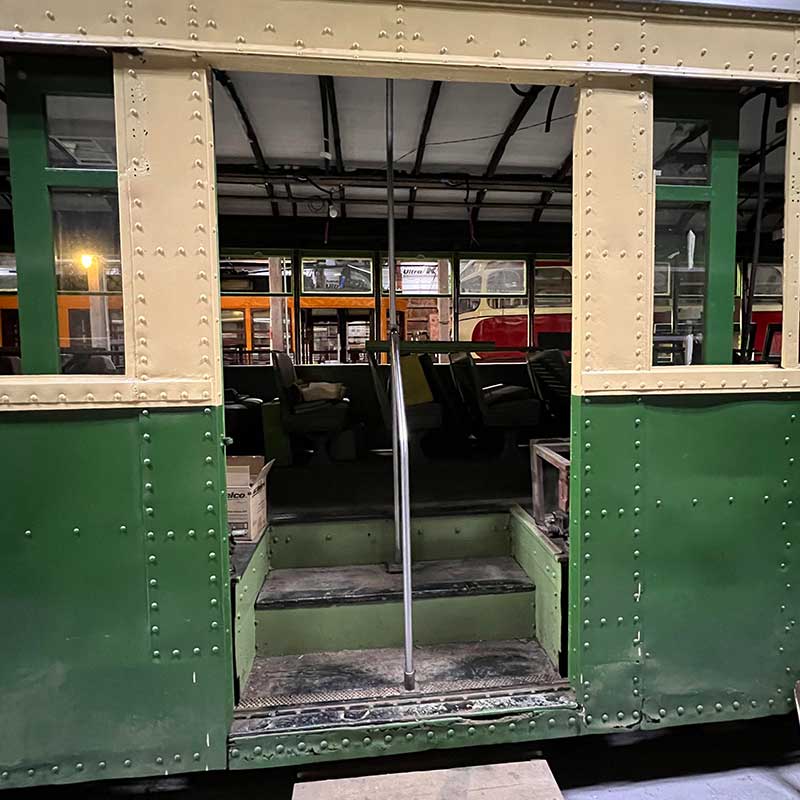Philadelphia Transportation Company 8042








Car 8042 is one of 385 single-end cars purchased in 1923 by the Philadelphia Rapid Transit Company (PRT). This same order included car 5326, one of 135 double-end passenger cars and a sizable fleet of utility cars, including cranes, plows, sweepers and other miscellaneous types built at the same time by J G Brill Company, also of Philadelphia. This order represented the largest single order for surface passenger equipment ever let at one time and kept the Brill plant busy for most of the year. Car 8042 was delivered to PRT in September 1923. An additional 100 single-end cars were ordered in December 1924 for 1925 delivery, followed by 50 single-end cars ordered in 1926 for use serving the Sesquicentennial Exposition. The 535 1923-1926 single-end cars were numbered 8000 through 8534 and were commonly referred to as 8000s (eighty-hundreds).
The 8000s incorporated many advances in design and construction over the older cars used in Philadelphia, such as a greater use of lightweight steel construction instead of composite steel and wood or all-wood framing construction, center exits with sliding doors and an interior step well instead of folding center doors and steps that created clearance problems on narrow streets.
All of the 8000s were equipped with center exits and a conductor’s booth for Peter Witt-type operation. They were also equipped with safety-type control equipment and could be operated by one man. Many of the cars were delivered with an unusual turnstile arrangement at the center door which permitted passengers to enter or exit through that door at the discretion of the operator. The operator would then collect fares at the front door. This idea did not prove too practical, and the turnstiles were removed in 1924.
In 1940, PRT, which was in receivership, was reorganized as the Philadelphia Transportation Company (PTC). A general program of rehabilitation was undertaken. Older cars were starting to be retired with the delivery of new streamlined PCC cars, trackless trolleys and motor buses. The remaining 668 (8000s and 5200s) cars were targeted for modernization. The modernization program included equipping the cars with:
* Herringbone gears and pinions for quieter operation.
* New braking equipment.
* Comfortable leather upholstery over the old wood slat seats.
* New rubber floors.
* Improved lighting using similar fixtures to the new PCC cars.
* Bars to replace the old screen-type window guards to improve the exterior appearance.
* New aluminum stanchions and grab rails.
* Chrome-plated seat grab handles.
* New headlights.
The management applied a new paint scheme using a brighter shade of green, added a set of wings around the headlights of the 8000s and christened the cars “Paintliners” for publicity purposes. The paint scheme also featured a silver roof and letterboard area, an ivory-cream window area and thin bright red stripes to accent the color changes above and below the window lines.
Between October and November of 1940, all 50 of the 1926 cars were modernized. Between November 1940 and October 1941, 137 of the 1923 8000s were also modernized as one man/two man cars and an additional 86 cars were modernized and remodeled for one man use only. The conductor booths were removed and the seating capacity increased through the installation of an extension to the longitudinal seat on the right side of the car. Car 8042 was included with this group.
The modernized 8000s were primarily used on Market Street in Philadelphia, both on the subway-surface lines to West Philadelphia and the surface lines to North, South and West Philadelphia. In later years the “Paintliner” color scheme was simplified to a gray roof, with the letterboard and window area an ivory-cream and a medium bus green below the belt rail. The last of these cars were removed from service in December 1957.
Car 8042 was chosen for preservation because it was the last car to operate on the York Road to Willow Grove line (Route 55) on September 8, 1940. All of the cars in service on Route 55 at the time of its conversion were sent to Kensington Shop for overhaul due to the poor condition of Route 55’s roadside trackage. These cars were all remodeled into the “Paintliner” scheme and assigned to subway surface lines.
Two other 8000s have been preserved. 8534, owned by the Electric City Trolley Museum in Scranton, PA, has been substantially backdated to its original 1926 PRT appearance. 8530, privately owned in Central Pennsylvania, retains the simplified colors of a modernized PTC car at the end of service in 1957.
PTM acquired this car through the sponsorship of the Electric City Trolley Museum in Scranton, PA in 2005.
Car Number
8042
Year Built
1923
Length
45'6"
Height
10'10"
Seats
55
Year Acquired
2005
Car Builder
J.G. Brill Company
Type
STREET & INTERURBAN RAILWAY PASSENGER CARS
Width
8'6"
Weight
37,720 lbs. (18.9 tons)
Motors
GE 275A
Location
Under restoration-Reynolds Galbraith Shop

